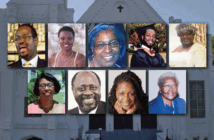For most of us, The Salvation Army has been an icon of service throughout our lives. The inner workings of the Army are unknown to most people, overshadowed by their caring presence among the poorest and most vulnerable in our midst. That changed somewhat when noted management expert Peter Drucker called them “by far the most effective organization in the U.S.” Drucker explained: “No one even comes close to it in respect to clarity of mission, ability to innovate, measurable results, dedication, and putting money to maximum use.”
Mission
The mission of The Salvation Army is “to preach the gospel of Jesus Christ and to meet human needs in his name without discrimination.” It is simple, and virtually everyone in the Army knows that nothing is more important than this purpose.
Peter Drucker called the Salvation Army “by far the most effective organization in the U.S. … No one even comes close to it in respect to clarity of mission, ability to innovate, measurable results, dedication, and putting money to maximum use.”
Flexibility
A constant mission could be seen as an inhibitor of change and innovation. Just the opposite is the case for The Salvation Army. Having a fixed center permits maximum flexibility in the methods of achieving the mission. The changeless appearance of the Army belies an inner dynamic that is constantly under review and changing. Both current practices and new ideas are tested in light of the mission. They often use two questions to assess a program: 1) What does this have to do with helping hurting people? and 2) Is this the best way to help hurting people? This flexibility extends to every territory and corps in that each is responsible for identifying community needs and developing ways to meet those needs.
Listening
Innovation comes from listening, especially listening to those you seek to serve. Listening is a way of life for The Salvation Army, but the listening is always tied to the larger purpose of the Army. The goal is not so much “community relations” as it is “mission improvement.” Some refer to this sequence of change as “Listen, Learn, Adapt.” The reality of a large organization in which there is ongoing dialogue with those receiving service is commendable and, unfortunately, is missing in many serving organizations.
Women leading
Like the early Methodist/Wesleyan/Holiness pioneers from which The Salvation Army emerged, they nurtured leaders among people not included in religious leadership of the times. This step forward was particularly true for the place of women in the movement. Diane Winston of the University of Southern California calls The Salvation Army “the first Christian group in modern times to treat women as men’s equals.” She quotes Anna Howard Shaw, one of the first women ordained in a Methodist tradition, as saying that the Army was “the best field at this time for comparing the services of men and women in the regeneration of humanity.”
Catherine Booth is considered the Army’s co-founder along with her husband, William. In 1934, their daughter Evangeline Booth was elected the Army’s first female general. Many say that it was during her leadership that the Army became more democratic and decentralized.
The role of women was circumscribed in some ways by the norms of the day, but the limits were pushed at times. During World War I, The Salvation Army sent young women to the front line to minister to American soldiers. That action was both risky and controversial; but, for many, “the Sallies” became the face of The Salvation Army and led to its almost universal name-recognition for the first time.
Trust through accountability
People trust The Salvation Army to do what they say they will do and to do it efficiently. That is one reason they are regularly the top choice for charitable donations. To improve their faithfulness to the mission, they count virtually everything and then measure their results against their purpose. The Army tracks everything it does — not to judge or brag but to document and learn.
Caution for churches
Even the beginning of The Salvation Army is a cautionary note for established churches. William Booth’s original plan was to work through established congregations. His idea was to refer new converts from among the outcasts of the city to churches. Not only were these new believers poor; many were thieves, drunks, and prostitutes. Booth discovered that not only were they not comfortable with the church folks, but the church members were ill at ease with these new believers. The Booths and their colleagues, therefore, had to move to an alternate plan: they gathered together those new converts for worship and encouraged them to invite their friends to join them. Thus The Salvation Army became both a church and a social service provider.
The difficulty of engaging people from established churches and those on the fringes of society was a challenge both in England and in the United States. Most congregations could learn much from The Salvation Army — not by trying to replicate their mission or mimic their practices, but rather by making a passion to serve God come alive through re-visioning church structures and practices. The Salvation Army continually reinforces its vital mission and reexamines the methods by which that mission is carried out. This approach can help churches in which the current practices have become sacrosanct and few may know the mission that these practices are intended to accomplish. Like The Salvation Army, our congregations can hold fast to a vital mission and continually ask fresh questions about how we can best be faithful to that mission.
Further reading
A book on The Salvation Army written in 2001 by a long-time officer and leader has been reissued as Leadership Secrets of The Salvation Army by Robert A. Watson and Ben Brown. Available at Amazon and Cokesbury. An academic study of the Army published by Harvard University Press is Red Hot and Righteous: The Urban Religion of The Salvation Army by Diane Winston. Available at Amazon






